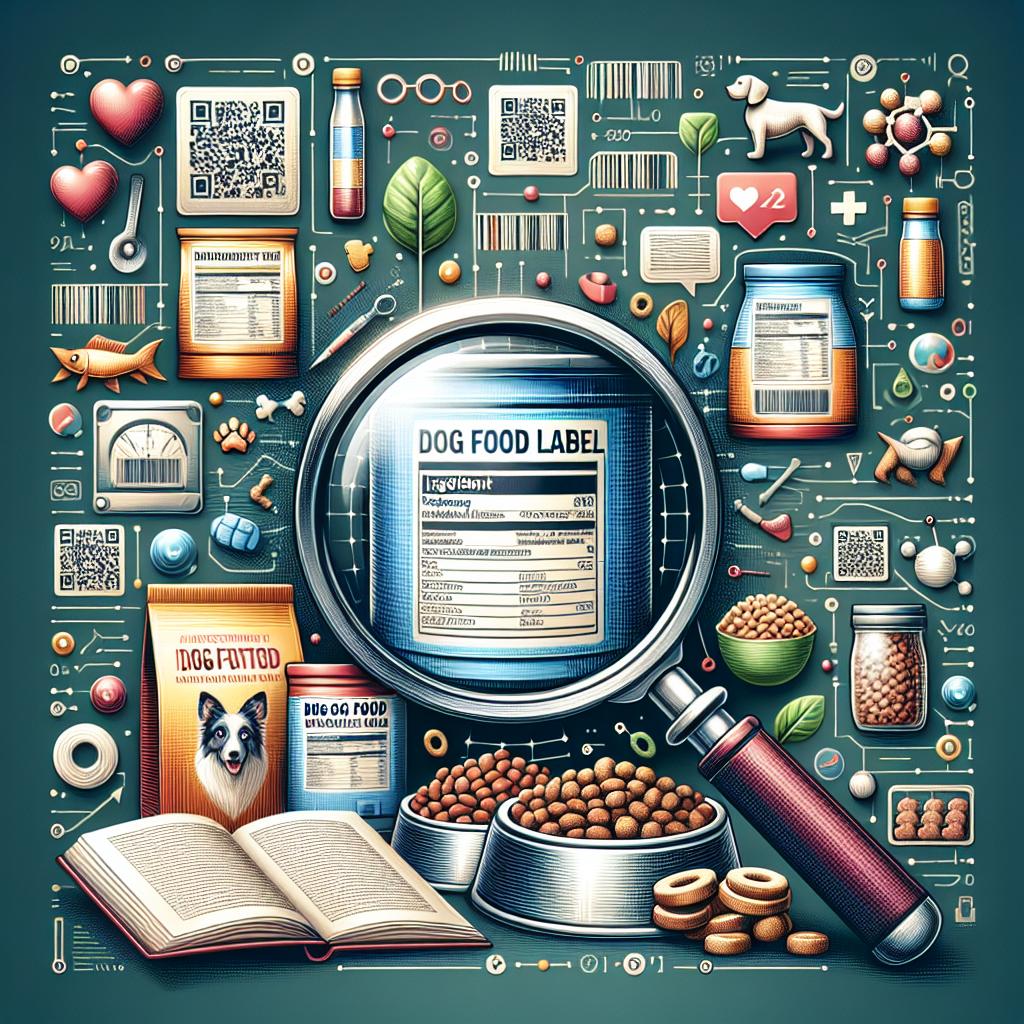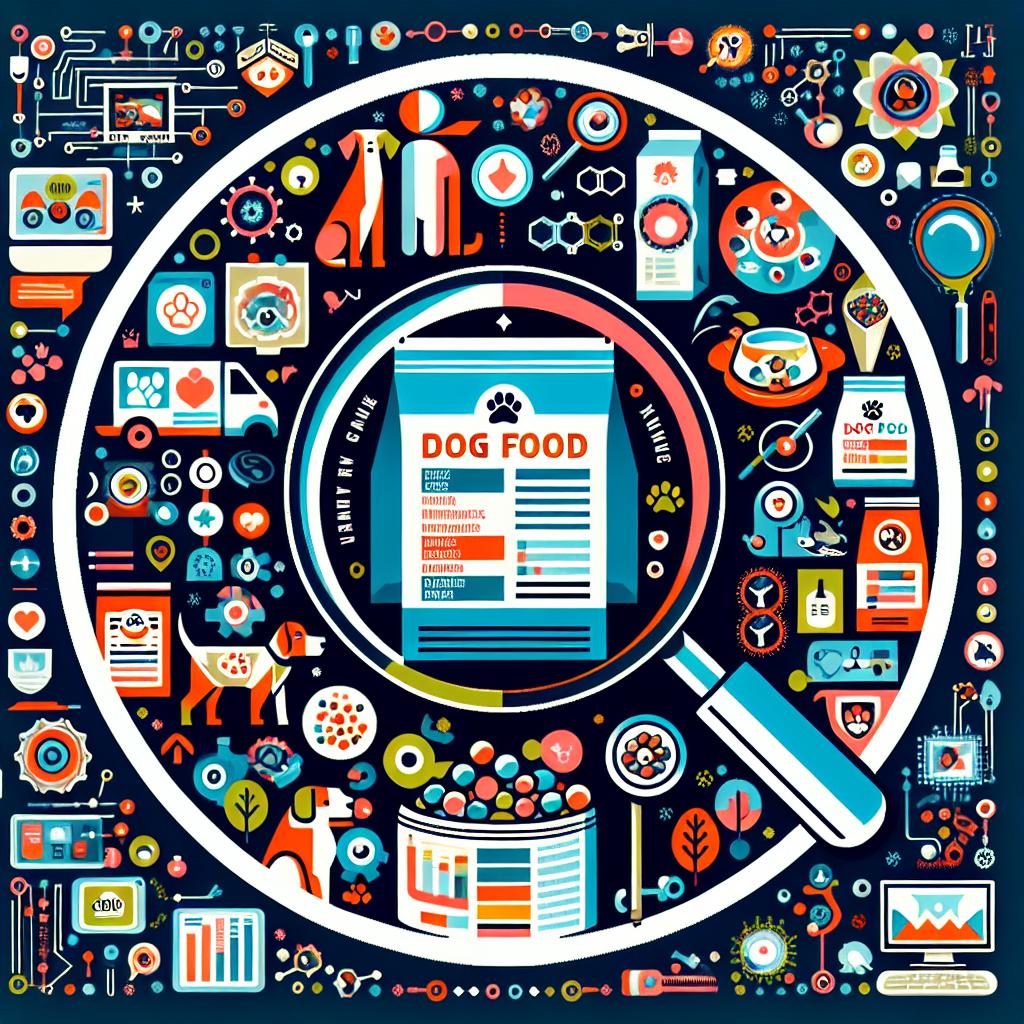When you stroll down the pet food aisle, the colorful bags and shiny cans of dog food can be as enticing as a candy store for a child. Yet, beneath the vibrant packaging lies a maze of terminology designed to inform—and sometimes confuse—pet owners. With so many choices available, understanding dog food labels becomes crucial in ensuring your furry companion receives the nutrition they deserve. From deciphering ingredients to recognizing nutritional claims, navigating these labels can feel overwhelming. In this article, we will break down the essential components of dog food labels and empower you with the knowledge needed to make informed decisions for your beloved pet’s diet. Let’s embark on a journey to demystify the science of canine nutrition, ensuring your four-legged friend enjoys a happy, healthy life.
Decoding Ingredients: What to Look for in Quality Dog Food
When it comes to selecting the best dog food for your furry friend, understanding the ingredients is crucial. Start by identifying high-quality protein sources, as dogs are primarily carnivores. Look for specific meats like “chicken,” “beef,” or “salmon,” rather than vague terms like “meat by-products.” In addition to proteins, consider the presence of whole grains like brown rice and oats. These provide essential carbohydrates for energy. Avoid foods that list fillers or artificial preservatives, such as corn or soy, which may not offer nutritional value.
Another essential aspect is the presence of fruits and vegetables in the ingredient list. These can provide antioxidants, vitamins, and minerals to support your dog’s overall health. Pay attention to fat sources; healthy fats like chicken fat or fish oil are beneficial for skin and coat condition. you may find it helpful to consider nutritional adequacy statements on the packaging, ensuring the food meets the standards set by the Association of American Feed Control Officials (AAFCO). This ensures well-rounded nutrition tailored to your dog’s life stage.

Nutritional Guidelines: Balancing Your Dogs Diet for Optimal Health
When assessing your dog’s dietary needs, it’s essential to create a balanced meal plan that meets their specific nutritional requirements. Dogs thrive on a combination of proteins, fats, carbohydrates, vitamins, and minerals, which collectively contribute to their overall well-being. Consider incorporating the following key components into their diet:
- High-Quality Protein: Look for named meat sources like chicken, beef, or fish, ensuring muscle maintenance and energy.
- Healthy Fats: Ingredients such as fish oil and chicken fat provide necessary fatty acids that help maintain coat health and support brain function.
- Whole Grains or Vegetables: Options like brown rice or sweet potatoes deliver digestible carbohydrates and fiber, promoting healthy digestion.
- Essential Vitamins and Minerals: Ensure the food contains a complete range of necessary nutrients, like calcium for bones and vitamins A and E for immune health.
To help you make informed decisions, here’s a simple chart highlighting common ingredients found in dog food and their benefits:
| Ingredient | Benefit |
|---|---|
| Chicken | Rich in protein, supports muscle health. |
| Salmon Oil | Provides omega-3 fatty acids for a healthy coat. |
| Carrots | High in fiber, great for digestion and vision. |
| Brown Rice | Easily digestible, good energy source. |
Common Marketing Terms: What They Really Mean for Your Pet
When navigating dog food labels, you’ll encounter a variety of marketing terms that can be confusing for even the most dedicated pet parent. These terms are often designed to capture attention but can sometimes obscure the true nutritional value of the product. For example, “natural” is commonly used, but it doesn’t have a strict definition in pet food regulations. This means that while the ingredients may come from natural sources, they could still be heavily processed. Similarly, the term “premium” implies higher quality, yet it lacks a concrete standard, so it’s essential to investigate further rather than taking these claims at face value.
Understanding these terms will help ensure you’re making informed choices for your furry friend. Here are some other common marketing terms to know when reading dog food labels:
- Holistic: Suggests a focus on overall health but may not guarantee superior nutrition.
- Grain-free: Popular among some pet owners, yet grains can be a healthy part of a balanced diet for many dogs.
- Made with real meat: This can be misleading; check the ingredient list to see if meat is the first ingredient.
| Term | Implication |
|---|---|
| Organic | No synthetic pesticides or fertilizers used |
| By-products | Ingredients derived from animal processing, quality varies |
| Limited Ingredient | May benefit dogs with food sensitivities, but not always nutritionally complete |

Special Dietary Needs: Tailoring Food Choices for Your Dogs Unique Requirements
Choosing the right food for your dog is especially crucial if they have specific dietary requirements. These needs might arise due to allergies, health issues, or even lifestyle choices. It’s important to look at the ingredients list on dog food labels to identify any potential allergens or components that could interfere with their health. For example, a dog with a grain allergy may need to consume grain-free alternatives, while dogs prone to obesity might benefit from lower-calorie formulations. Understanding what each ingredient can contribute will empower you to make informed food choices that align with your dog’s unique needs.
In addition to reading ingredient lists, you should also pay attention to the nutritional analysis provided on the label. This analysis typically breaks down the key nutrients, helping you ensure your dog is receiving a balanced diet. Here’s a simplified table to illustrate some common dietary needs and their corresponding food considerations:
| Dietary Needs | Food Considerations |
|---|---|
| Grain Allergies | Grain-free formulas with alternative carbs like sweet potatoes or peas |
| Weight Management | Low-calorie or weight control dog foods |
| Skin Sensitivities | Limited ingredient diets with novel proteins |
| Senior Dogs | Foods formulated to support joint health and digestion |
By carefully analyzing these labels and matching your dog’s specific requirements with the right food choices, you can significantly improve their overall health and well-being. Empower yourself with knowledge to ensure your furry friend receives the best nutrition tailored just for them!
Q&A
Q&A: Understanding Dog Food Labels – What You Need to Know
Q1: Why are dog food labels important?
A1: Dog food labels are crucial because they provide insights into the nutritional value of the food, which can influence your dog’s health and well-being. Reading the label helps pet owners make informed choices, ensuring their furry friends get the right balance of nutrients, avoid allergens, and maintain a healthy weight.
Q2: What are the key components of a dog food label?
A2: A dog food label typically includes the product name, ingredients list, guaranteed analysis, feeding guidelines, and nutritional adequacy statement. Each section serves a distinct purpose, helping you understand what’s in the food, its nutritional value, and how much to feed your pet.
Q3: What should I look for in the ingredients list?
A3: When examining the ingredients list, look for high-quality sources of protein as one of the first ingredients, such as chicken, beef, or lamb. Also, keep an eye out for whole grains or vegetables and avoid foods with fillers, artificial preservatives, or by-products that may compromise nutrition.
Q4: Can I trust marketing claims on dog food packaging?
A4: While marketing claims can be appealing, it’s essential to approach them with a critical eye. Phrases like “grain-free” or “all-natural” may sound beneficial, but they can sometimes be misleading. Always refer back to the ingredients list and guaranteed analysis for a more accurate view of the food’s quality.
Q5: What does the guaranteed analysis tell me?
A5: The guaranteed analysis provides a breakdown of the minimum percentage of crude protein and fat, as well as the maximum percentage of fiber and moisture in the food. This section helps you assess the overall nutritional content and balance, so you can choose a food that meets your dog’s specific dietary needs.
Q6: How do I interpret the nutritional adequacy statement?
A6: The nutritional adequacy statement indicates whether the food meets Association of American Feed Control Officials (AAFCO) standards for complete and balanced nutrition. Look for statements that specify whether the food is formulated for all life stages or specific stages like puppy or senior. This information is key to ensuring your dog gets the right nutrients at the right time.
Q7: Is it worth investing in premium dog food?
A7: Investing in premium dog food can often translate to higher-quality ingredients and better nutritional profiles for your pet. Higher-quality foods may lead to healthier skin, shinier coats, and overall improved energy levels, ultimately benefiting your dog’s long-term health. However, it’s essential to research and choose a brand that suits your dog’s unique needs, regardless of price.
Q8: How often should I review my dog’s food label?
A8: It’s a good practice to review your dog’s food label whenever you purchase a new bag. Formulas can change, and brands may alter their recipes. Additionally, as your dog ages or their health needs change, you may need to adjust their diet accordingly. Regular review ensures you stay up-to-date with the best options for your pup.
Q9: Can I mix different dog foods?
A9: Mixing different dog foods is possible, but it should be done with caution. Abrupt changes in diet can upset your dog’s stomach. If you choose to mix foods, gradually transition over several days to ensure your dog’s digestive system adjusts well. Always consult your veterinarian to help determine the best diet for your dog.
Q10: Where can I find more information about dog food labeling?
A10: For more in-depth information, consult reputable websites and resources, such as the AAFCO, the American Kennel Club, or your local veterinarian. They can provide guidance, tips, and the latest research to help you navigate the pet food world more effectively and ensure your dog enjoys a healthy, balanced diet.
In Summary
As we conclude our exploration into the world of dog food labels, it’s clear that a little knowledge can go a long way in ensuring our furry friends receive the nutrition they deserve. By understanding the intricacies of ingredient lists, interpretations of nutritional guarantees, and the significance of various certifications, you can make informed choices that cater to your dog’s specific needs. Just like each dog is unique, so too are their dietary requirements. Armed with this newfound insight, you’re now better equipped to navigate the aisles of pet food options with confidence and care. Remember, a happy, healthy dog begins with a thoughtful approach to their diet—so take the time to read, research, and ask questions. After all, they rely on us to make the best decisions for their well-being, one label at a time.

